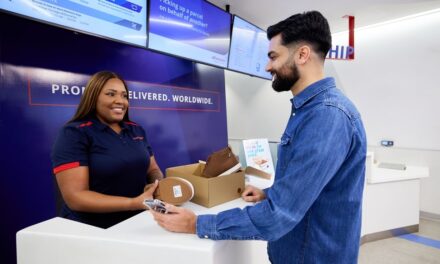
Taking ownership for digital returns

This article is an extract from the Summer Edition of MER Magazine published in May 2020. You can read the full article as well as other articles from MER for free by becoming a member of Post & Parcel today.
MER speaks to Justin Dery – Chief Executive Officer for Doddle Asia Pacific – to find out why online returns are the ultimate opportunity for postal operators and carriers.
“Returns represent one of the biggest opportunities in the consumer fulfilment space today. Any carrier working with retailers has the chance to take ownership of a key challenge in the retail industry and deliver a triple win for their merchants, for the end customers, and ultimately for themselves.
To achieve that, carriers and posts need to change how they approach returns. No longer can they be a simple source of capacity, transmitting parcels – posts and carriers need to harness returns data to add value to retailer relationships and help them to address this key challenge through education.
Why retailers are struggling with returns
The past decade has shown that returns can be a simple win for merchants. There are countless studies showing that offering customers easier returns and a great experience increases checkout conversion. Leading merchants have adopted returns platforms which give them a powerful insight into their customer’s journeys through returns data.
One of the biggest barriers to reaching this panacea is that merchants are understandably hesitant to embrace returns as a loyalty driver, because returns drive costs. The problem is that by making returns harder, merchants lose customers. 41% of shoppers have stopped purchasing from a merchant due to a poor returns experience. The returns experience is a key loyalty factor.
It also matters in acquisition – 72% of shoppers check returns policies before committing to a purchase. That means merchants don’t just have to offer a slick returns journey, they also must communicate how great their returns experience is.
Carriers and posts have the chance to collaborate with their retail customers when it comes to returns and improve their practices. It’s a valuable opportunity. By delivering the tools and services to make this happen, carriers and posts grow their outbound volume thanks to increased checkout conversion and also take ownership of the inbound returns volume.
Where do the challenges in returns lie?
When we were in the design process for our returns platform, we interviewed individuals working retailers and carriers to understand their experiences of returns. We ended up pasting a wall of the office with post-it notes showing us every step of the journey and every issue associated with it. You can see for yourself how the journey is currently fragmented and hard to navigate. Nobody owns the whole thing, everyone is working at cross purposes.
- After sales
- Exchange not offered
- Customer takes a long time to return
- Customers all treated identically
- Retailer captures little/no data
- Returns options inconvenient for customer
- Poor visibility of item during journey for retailer
- Poor tracking for customer
- Sorting centre unable to predict inbound volume
- Time to back-in-stock often >30 days
- Refunds slow to arrive
- High customer support contact rates
So there are obviously a long list of symptoms to address here, but let’s look at the structure first of all. There is no single system that works to monitor this process. Everything happens in its own little box. A customer decides to return an item and has to fill out a form, often they don’t do this very accurately. Then they fire it off via post or drop-off. So far, the retailer has absolutely no idea that anything is wrong – but the customer has already had a bad experience.
The carrier doesn’t know what they’re carrying, and they’re not sending updates to the retailer or the customer.
The retailer does not know that this customer is returning something until someone opens the box in the sorting centre/returns warehouse. When they do that, it takes them over a month to get any saleable items back into stock, and refunds are processed slowly, and they’re often not updating customers on the progress of their return or refund.
Customers, carriers and merchants are all working blind. The confusion and frustration that results shouldn’t surprise us.
Turning the lights on
Our diagram shows carriers playing a pretty minor role in returns as it stands. These are just more parcels to put on more trucks – which is great for business, but doesn’t particularly address the structural problem.
Carriers and posts are uniquely positioned at the intersection of consumers and retailers. They have the opportunity to bring the whole returns journey into one cohesive structure, giving retailers the information they need to improve and profit, and giving customers the communications and experience that will keep them loyal to retailers.
Owning the digital returns experience is key. This is how carriers and posts unite every data point throughout the journey and giving retailers a single view of returns – by offering them a customisable, brandable service that allows consumers to sort out their returns and monitor them online.
As consumers, we all shop online, book appointments online, and use our phones to keep track of our lives. Returns shouldn’t be an exception.
Helping merchants build for the 99%
One of the things that makes retailers reticent around making returns easier is the perception that customers are exploiting returns. The numbers don’t actually bear this out, although given the prominence of media stories about ‘wardrobing’ et cetera, you’d be forgiven for thinking otherwise.
In reality, just 11% of shoppers have ordered items online with the intention to return one or more items. Of those, 38% never got around to returning the items anyway. Single-digit percentages of customers are ‘deliberately’ returning (i.e. purchasing things they know they will send back), and that behaviour is often associated with high-value customers who are purchasing many items and returning one or two after evaluating several options.
Worrying about the tiny number of misbehaving customers ‘getting one over’ on the system is much less productive than optimising the returns journey which affects all of their customers. To that end, carriers and posts who can own the data around returns should be proactively aiding retailers in understanding how to improve their returns for that 99% of consumers.
Having access to returns data makes understanding the customer behaviours much easier and helps retailers to deliver a profitable returns experience. For example, Amazon offer instant refunds to high-value customers – a small way to keep a customer happy despite them having to return something. They also vary the cost of the return depending on the reason – if the consumer is simply regretting their purchase, they contribute to the cost of the return. If there is a flaw in the product, the return is free. So many retailers don’t do this simple analysis of return reason and miss the opportunity to recover costs.
Network power
This is where posts and carriers benefit from their scale and existing infrastructure, to give every retailer the ability to offer pick-up and drop-off networks, label-free returns, locker drop-offs and digital returns journeys – all the aspects of a fully-fledged returns experience.
To perform that role, they need to do their part to educate consumers about these offerings and their choices when it comes to returning ecommerce purchases. Changing consumer behaviour takes time, but by working with retailers to encourage specific behaviours through their checkouts or customer account UI, carriers can make sure that the right mix of options are surfaced to customers when they come to return an item.
Market maturity matters, but some challenges are global
Every e-commerce market is different. The UK quickly grasped the opportunity to increase checkout conversion and gain market share via free returns but is now struggling with increasingly unsustainable customer expectations and a lack of data to inform process improvements.
By contrast, Japan doesn’t have an established cultural norm of returning purchases, though growing fast-fashion e-commerce & foreign entrants are raising consumer expectations. Australia and New Zealand are somewhere in-between as retailers want to avoid costly returns overheads and typically err on the side of trying to minimise returns volumes via restrictive returns policies. At Doddle, we brought experience of the intensely competitive and highly mature UK returns market to Australia through partnership with Australia Post, offering collections and returns in their post offices nationwide and through third-party retail partners.
In the US, Walmart and Amazon have led the way in offering generous free returns policies. Of course, the scale of Amazon means that its policies now have a global impact on consumer expectations, and its recent entry in Australia will certainly impact the market there. Unsurprisingly, Amazon has built its own returns platform and leads the market when it comes to the ease and sophistication of its returns proposition. Per a recent Amazon insider, only projects with one of three goals ever get backed internally. Those key targets? Free returns, one-day delivery and cheaper prices. While markets are currently differentiated, the same expectations and challenges are on their way to all.
Even today, returns systems around the world need clarity and dedicated ownership from carriers. They have a responsibility and an opportunity to educate their retail partners about returns. Firstly, retailers must want to do something. Secondly, carriers have to take ownership and understand that they need to transmit data as much as they transmit parcels, so that they can help retailers really succeed in making returns a profitable, loyalty-building activity. Thirdly, both carriers and retailers must provide digital journeys and a variety of returns options for consumers, and crucially make them aware of these options.
 About Justin Dery
About Justin Dery
Justin Dery is the CEO of Doddle Asia Pacific. Justin joined Doddle in 2017 to launch the first international expansion in Australia. Prior to joining Doddle, Justin was founder and CEO of Coverpoint Marketing Group, a full-service digital, marketing and brand management agency. For more information visit
This article is an extract from the Summer Edition of MER Magazine published in May 2020. You can read the full article as well as other articles from MER for free by becoming a member of Post & Parcel today.













